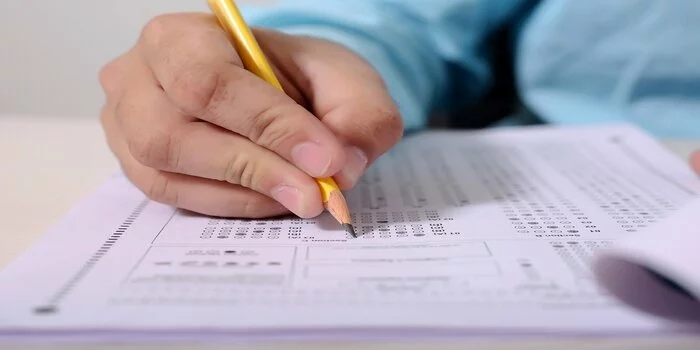MET Syllabus 2020 – Manipal Academy of Higher Education (MAHE) will release the syllabus of MET 2020 before the conduct of the computer-based exam. MET 2020 syllabus will contain the subject-wise topics from which questions will be asked in the exam. It may be noted that the MET 2020 question paper comprises four subjects – Mathematics, Physics, Chemistry, and English. Out of these four subjects, Maths carries maximum 35% weightage, whereas Physics and Chemistry each carry 25% weightage. This shows Mathematics to a large extent holds the key as to how the student performs in MET 2020 entrance exam. The candidate thus by consulting the MET syllabus 2020 will know which topics to prioritise so that they can perform well in the exam. Go through the rest of the article to learn the full details of MET 2020 syllabus.
MET Syllabus 2020 – Significance
- Every candidate should consult the MET syllabus without fail if they want to do well in the exam
- The syllabus would contain the topics one need to prepare for each subject; questions in the exam will be asked from within the syllabus released by MAHE
- The student may segregate the various topics in MET syllabus 2020 into different categories like – easy, moderate and difficult
- This will help the candidate take note of topics that will need special attention.
- The student will also be able to see how much time and effort is being required for preparing for these sections.
- This insight will help formulate future study plans so that bottlenecks can be corrected.
- To prepare for the various topics, the candidate must refer to the best books for MET 2020
- It is because MET best books will contain few errors, will be written in easy-to-understand language, cover the entire syllabus, contain examples and illustrations. Also they will come with problem sets that the student may practice to get better understanding of concepts and improve problem solving skills.
- Another thing is, along with the syllabus, the candidate must also refer to the official MET 2020 exam pattern for exam preparation.
- It is also recommended that the student makes mock tests and solving of MET 2020 sample papers an integral part of exam preparation.
Also Read:
MET Eligibility Criteria
Assam CEE 2020
JEE Main 2020
MHT CET 2020
MET Syllabus 2020
The subject-wise topics the candidate has to study for MET 2020 has been given in the table below.
| Subject | MET 2020 syllabus – Topics (or Units) |
| Physics | Units and Measurement, Kinematics, Laws of Motion, Work and Energy, Motion of System of Particles and Rigid Body, Gravitation,Properties of Bulk Matter, Thermodynamics, Behaviour of Perfect Gases and Kinetic Theory of Gases, Oscillations and Waves, Electrostatics, Current Electricity, Magnetic Effects of Current and Magnetism, Electromagnetic Induction and Alternating Currents, Electromagnetic Waves, Optics, Dual Nature of Radiation and Matter. Atoms and Nuclei, Electronic Devices, Communication Systems. Experimental Skills, |
| Mathematics | Sets, Relations and functions, Trigonometric functions, Inverse trigonometric functions. ALGEBRA Principle of mathematical induction, Complex numbers and quadratic equations, Linear inequalities, Permutations and combinations, Binomial theorem, Sequence and series, Matrices, COORDINATE GEOMETRY, VECTORS AND THREE-DIMENSIONAL GEOMETRY Straight lines, Conic sections, Vectors, Three-dimensional geometry, CALCULUS Limits and derivatives, Continuity and differentiability, Applications of derivatives, Integrals, Applications of the integrals, Differential equations MATHEMATICAL REASONING STATISTICS AND PROBABILITY LINEAR PROGRAMMING |
| Chemistry |
Section-A: Physical Chemistry Basic concepts in Chemistry, States of matter, Gaseous stateLiquid state, Atomic structure, Chemical bonding and molecular structure, Ionic bonding, Covalent bonding, Metallic bondingHydrogen bonding, Solutions, Equilibrium involving physical processes:, Equilibrium involving chemical processes, Redox reactions and Electrochemistry, Chemical Kinetics, Surface chemistry, adsorption, Catalysis, Colloids, Chemical thermodynamics, Section – B: Inorganic Chemistry Periodic properties, Principles and processes of metal extractions, Hydrogen, S-block elements, P-block elements, Group 13, Group 14, Group 15, Group 16, Group 17, Group 18, d and f block elements, Lanthanoids, Actinoids, Coordination compounds, Environmental chemistry Section – C: Organic Chemistry Purification and characterization of organic compounds, Basic principles of organic chemistry, Nomenclature, Electronic displacement in a covalent bond, Types of organic reactions, Hydrocarbons, Alkanes, Alkenes, Alkynes, Aromatic hydrocarbons, Organic compounds containing halogens, Organic compounds containing oxygen, Alcohols, Phenols and Ethers:, Alcohols, Phenols, Ethers, Aldehyde and Ketones, Carboxylic acids, Organic compounds containing Nitrogen, Amines, Diazonium salts, Polymers, Biomolecules, Carbohydrates, Proteins, Vitamins, Nucleic acids, Chemistry in everyday life, Chemicals in medicine, Chemicals in food, Cleansing agents, Principles related to practical chemistry, Chemistry involved in the titrimetric exercises, Chemical principles involved in the qualitative salt analysis |
| English | Questions in this section are of 10 + 2 standard. It doesn’t evaluate students’ knowledge of English literature, but rather their ability to grasp the fundamental concepts in English grammar and usage. Proficiency in English language is tested through objective-type MCQs on grammar, vocabulary, sentence correction, synonyms, antonyms, homophones, homonyms, one word substitutions, idioms and phrases,phrasal verbs, and usage. To do well in the section, one doesn’t need to learn the glossary of complicated grammatical jargon, but should have the basic knowledge of word usage, matching of subject and verbs, correct usage of tenses, and grammatically correct sentences acceptable in standard written communication. Tense – Use of proper tense and sequence of tense Modals (have to/had to, must, should, need, ought to and their negative forms) Subject – verb concord Pronouns Sentence structure Usages in English: Commands and requests, Statements, Questions Clauses: Noun clauses, Adverb clauses of condition and time, Relative clauses Determiners/ Use of proper articles Prepositions Vocabulary: Synonyms, Antonyms, Spellings, One word substitutions |
LATEST: To download the official and detailed MET 2020 syllabus ( MU OET syllabus 2020) – Click here
MET Exam Pattern 2020
All applicants should carefully go through the MET exam pattern given in the table below.
| Mode of exam | Computer-based test |
| Test duration | 2 hours 30 minutes |
| Question type | Multiple Choice Questions (Objective) |
| Subject and distribution of questions | Physics – 50 questions Chemistry – 50 questions Mathematics – 70 questions English – 30 questions |
| Total number of questions | 200 |
| Marking scheme | For every correct answer, 4 marks will be awarded For a wrong answer, 1 mark will be deducted |
| Total marks | 800 |
| Number of attempts | In a given year, MET test can be attempted only once |
| Medium of Test | English |





